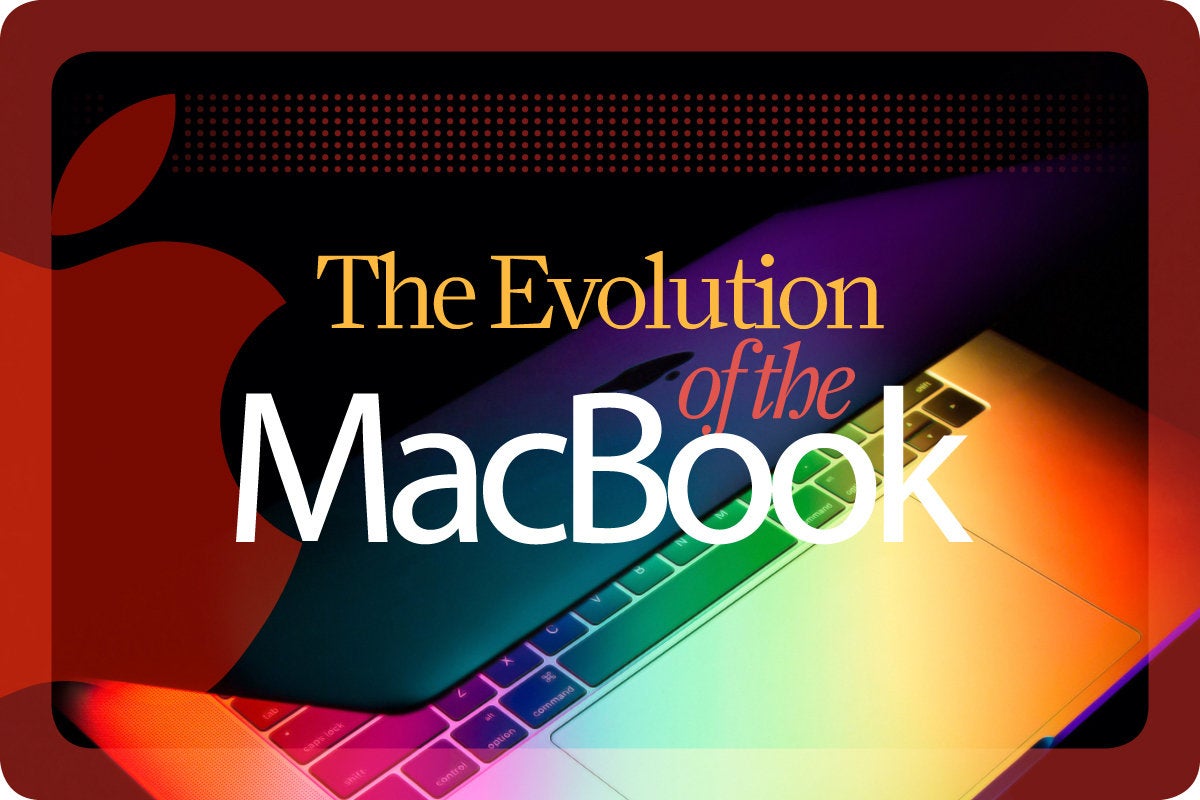A major tool for college students and creative professionals alike, Apple’s laptops have dominated the way users approach productivity on the go.
The MacBook line debuted in 1991 — though there have been a variety of different naming conventions and models over the years. Remember the early PowerBooks of the 1990s? The iBook G3? And of course the biggest news in recent years has been the arrival of MacBooks powered by Apple’s M-series chips in 2021.
From the original PowerBook to the newest MacBook Pro and the Air, we explore the evolution of Apple’s iconic laptops and the innovative changes each generation brought.
PowerBook 100 IDG / Danamania (CC BY-SA 3.0)
A successor to Apple’s first-ever laptop — the Mac Portable — the PowerBook 100 featured a setback keyboard, which made room for palm rests, and a front-and-center trackball — for both left- and right-handed users — that would set the default standard for laptops.
Although it was criticized for lacking a floppy disk drive, it went on to become a huge success. Manufactured by Sony, it featured a Motorola 68000 processor, 2MB of RAM and a 9-in. backlit LCD. PCworld named it the 10th greatest PC of all time in 2006.
PowerBook 500 IDG / Danamania (CC BY 2.5)
Apple released its PowerBook 500 series in 1994. It included a trackpad, which replaced the trackball, a built-in microphone, Ethernet and stereo speakers. Depending on the model, it also included a 9.5-in. black-and-white or color display and a Motorola 68LC040 CPU.
PowerBook G3 IDG / Danamania (CC BY 3.0)
The PowerBook G3 was Apple’s most customizable laptop. It offered a PowerPC G3 chip that was up to two times faster than the Pentium and Pentium II processors used in PC notebooks and desktops, a CD-ROM and DVD-ROM drive, built-in video output, swappable expansion bays for multiple storage options and lithium-ion batteries. It also featured a flip-up keyboard for easy access to the RAM expansion slot and removable hard disk drive.
iBook G3 IDG / Apple
Now known as the “clamshell,” Apple’s first iBook design was influenced by the first iMac. It featured a polycarbonate shell in two translucent colors, a 12.1-in. high-resolution active-matrix display, a built-in CD-ROM drive, a 3.2GB hard disk drive, wireless networking and a convenient carrying handle.
Powered by a PowerPC G3 processor, it included a 6-hour lithium-ion battery and a trackpad that supported tap, double-tap and dragging capabilities. Its integrated power plug glowed amber when the battery was charging and turned green when it was fully charged. The iBook G3 also included a sleep indicator beacon light that indicated when the iBook was asleep or turned off.
PowerBook Titanium G4 IDG / Apple
Apple unveiled its Titanium PowerBook G4 in 2001. It featured a PowerPC G4 processor, a slot-loading DVD drive and had a 5-hour battery life. At 1-in. thick and 5.3 pounds, it included a 15.2-in. TFT widescreen active-matrix display and…
2023-12-20 06:00:04
Source from www.computerworld.com rnrn
